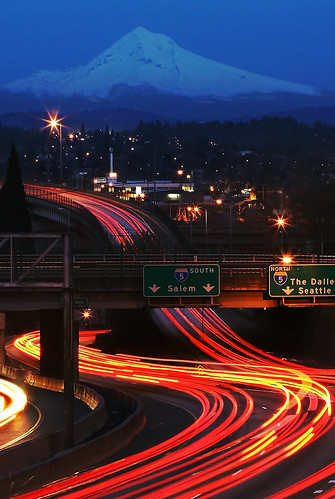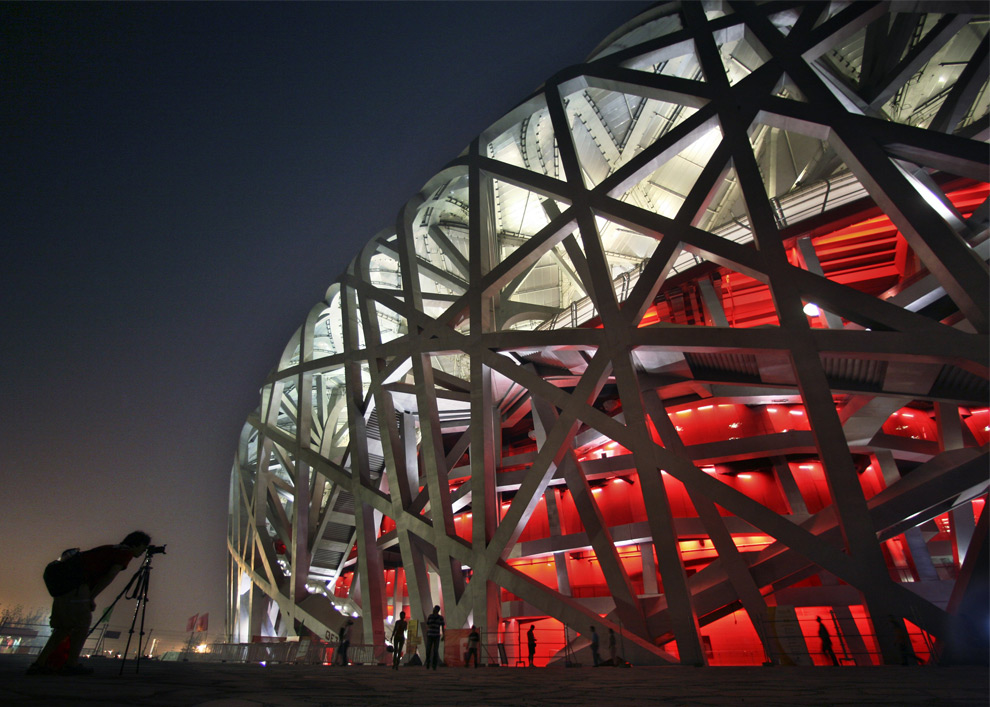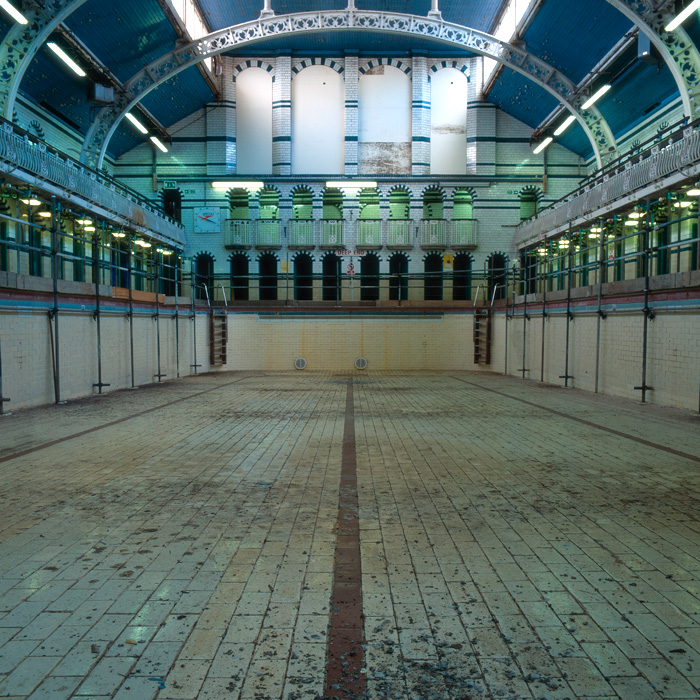









It's baaaack.
 Cities are extremely complex organisms made up of hundreds of independent and interdependent systems. The most basic and oft-overlooked of these systems are some of the most vital. Sewers, which remove waste and excess water, keep our streets clean and dry. They do this out of sight. Canals, rivers, bridges, and roadways allow for the transportation of goods and people within densely populated urban centers. We take them for granted. We have many large facilities for cleaning our water, recycling our trash, and producing our energy, and we hate it when we have to look at them. We so often forget to appreciate the importance of having a strong network of well-maintained public and green spaces. We get so involved in our own social systems that we forget that the larger framework of the city is there, making it all possible. We forget that cities themselves are living things, and that, ours are just tiny parts of a huge, interconnected process -- of creation, of destruction, of life.
Cities are extremely complex organisms made up of hundreds of independent and interdependent systems. The most basic and oft-overlooked of these systems are some of the most vital. Sewers, which remove waste and excess water, keep our streets clean and dry. They do this out of sight. Canals, rivers, bridges, and roadways allow for the transportation of goods and people within densely populated urban centers. We take them for granted. We have many large facilities for cleaning our water, recycling our trash, and producing our energy, and we hate it when we have to look at them. We so often forget to appreciate the importance of having a strong network of well-maintained public and green spaces. We get so involved in our own social systems that we forget that the larger framework of the city is there, making it all possible. We forget that cities themselves are living things, and that, ours are just tiny parts of a huge, interconnected process -- of creation, of destruction, of life. A contest was announced on February 15th by the Design Trust for Public Space and the Grand Army Plaza Coalition to generate ideas as to how Brooklyn's severely underused Grand Army Plaza, at the northern entrance to Prospect Park (which many, this blogger included, consider to be Olmsted's greatest park) could be redesigned as a more lively, energetic public space. The plaza, which sits atop a subway station, provides an excellent platform for any designer interested in creating a space that more clearly and fluidly emphasizes and integrates the transit system with the public space at street level. How do the public (park) and semi-public (subway station) interact, and how can design make this not only more enjoyable, but more informative?
A contest was announced on February 15th by the Design Trust for Public Space and the Grand Army Plaza Coalition to generate ideas as to how Brooklyn's severely underused Grand Army Plaza, at the northern entrance to Prospect Park (which many, this blogger included, consider to be Olmsted's greatest park) could be redesigned as a more lively, energetic public space. The plaza, which sits atop a subway station, provides an excellent platform for any designer interested in creating a space that more clearly and fluidly emphasizes and integrates the transit system with the public space at street level. How do the public (park) and semi-public (subway station) interact, and how can design make this not only more enjoyable, but more informative? Good stuff, good stuff, good stuff. Enjoy some reading this weekend, folks. There's something here for everyone...
Good stuff, good stuff, good stuff. Enjoy some reading this weekend, folks. There's something here for everyone... Sometimes I can't help but wonder if maybe the whole Creative Class phenomenon is doing more to harm cities than it does to help them. Not in all cases, of course...certainly many cities are benfitting from the investment in their artistic and recreational infrastructure. But the primary purpose of a city is to provide high-quality services to all of its citizens, and at times it seems like this responsibility falls by the wayside as civic governments try to focus on building Creative Class-friendly amenities.
Sometimes I can't help but wonder if maybe the whole Creative Class phenomenon is doing more to harm cities than it does to help them. Not in all cases, of course...certainly many cities are benfitting from the investment in their artistic and recreational infrastructure. But the primary purpose of a city is to provide high-quality services to all of its citizens, and at times it seems like this responsibility falls by the wayside as civic governments try to focus on building Creative Class-friendly amenities. Walkability, density, urban character -- all of these things are supposedly important to the Creative Class. Yet there are cities much closer to New York (aka the Center) than Portland that offer all of these things in larger helpings yet have failed to tap into the Creative Class boom as effectively as the Rose City. To name a few: Philly (which is starting to benefit from NY's overflow but is still limping considerably), Washington DC, Pittsburgh, Cleveland, Cincinnati, Milwaukee, Richmond. It seems to me that the advantage that Portland had over these places was strong, well-maintained infrastructure. After all, if you don't want to live in New York but you can live pretty much anywhere else, you're going to choose a city that can provide you with the most comfortable life with the lowest amount of stress.
Walkability, density, urban character -- all of these things are supposedly important to the Creative Class. Yet there are cities much closer to New York (aka the Center) than Portland that offer all of these things in larger helpings yet have failed to tap into the Creative Class boom as effectively as the Rose City. To name a few: Philly (which is starting to benefit from NY's overflow but is still limping considerably), Washington DC, Pittsburgh, Cleveland, Cincinnati, Milwaukee, Richmond. It seems to me that the advantage that Portland had over these places was strong, well-maintained infrastructure. After all, if you don't want to live in New York but you can live pretty much anywhere else, you're going to choose a city that can provide you with the most comfortable life with the lowest amount of stress.